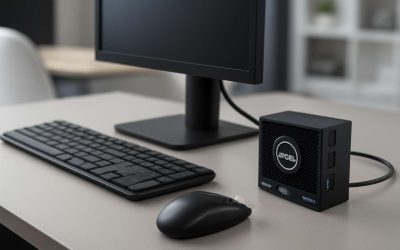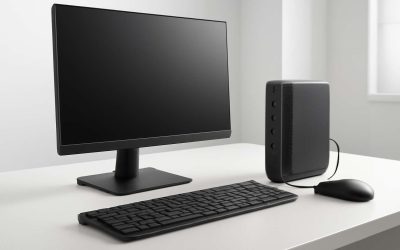
A dumb terminal is a computer monitor with a keyboard and often a mouse. It has no internal CPU (central processing unit) or disk storage, and it does not have the ability to process data on its own. It is used for input and output operation with a central computer.
Dumb terminals are similar to a point-of-sale (POS) machine in that they connect to a more powerful server via a network. They do not have the capability to perform any processing on their own and are not considered to be smart devices since they cannot make independent decisions. Smart terminals, on the other hand, can be more advanced in terms of functionality and can act as a point-of-contact for customers and your merchant services provider.
While it may seem like a dumb terminal is simple, these machines are actually sophisticated pieces of equipment that allow businesses to run credit and debit card payments in a secure way. They are also responsible for logging customer information and sending that information to your merchant services provider to be processed. This process allows you to store and analyze your transaction history and provides you with important reporting that can help you identify trends in spending patterns among your customers.
Historically, dumb terminals were the primary means of connecting to mainframes and minicomputers from a desktop computer. However, as manufacturing processes improved and microprocessor technology became cheaper, the dumb terminal slowly became obsolete both in function and concept. Today’s smart terminal and thin client are much more advanced than their ancestors, able to provide far more user-friendly features.
With the advent of PCs, users needed a way to access the mainframe. This is where the terminal emulator was born, allowing PCs to act as a dumb terminal by emulating the underlying terminal software. This solution is also more cost effective than using a separate terminal.
Smart terminals can offer a more user-friendly experience than dumb terminals and can increase employee productivity. The best models, for example, are able to offload some low-level content handling and display functions from the host computer to the terminal. This reduces CPU load and enables faster feedback.
Some smart terminals have the ability to send receipts directly to customers’ email inboxes, further reducing paper waste. This can be particularly useful in retail settings, where buyers might have trouble keeping track of small slips of paper.
Smart terminals that communicate with a POS system can record all payment details for each customer, including their credit or debit card numbers and the amount of each purchase. This can protect you from any fraudulent activity by ensuring that the bank has all the relevant information to process a chargeback. It also enables you to track customer purchases and keep them in a centralized database, which you can then use for marketing purposes. You can also use your smart terminal to collect customers’ email addresses, a great way to offer special discounts and newsletters that will encourage them to return to your business.



0 Comments